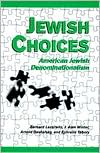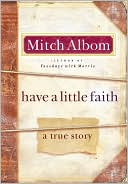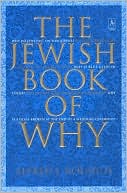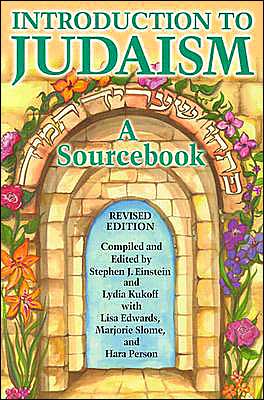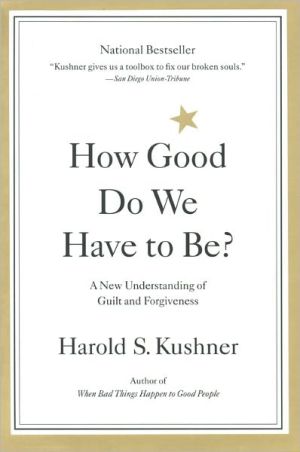Jewish Choices: American Jewish Denominationalism
American Jews have divided their religion into four parts-Orthodox, Conservative, Reform, and no preference Jews. This book focuses on how Jewish lifestyles are expressed through denominational affiliation. The development of American Jewish denominations is viewed as more a matter of individual choice than family heritage. The characteristics of individual adherents of the three major denominations vary systematically as does one's involvement both in local Jewish communities and in the...
Search in google:
American Jews have divided their religion into four parts-Orthodox, Conservative, Reform, and no preference Jews. This book focuses on how Jewish lifestyles are expressed through denominational affiliation. The development of American Jewish denominations is viewed as more a matter of individual choice than family heritage. The characteristics of individual adherents of the three major denominations vary systematically as does one's involvement both in local Jewish communities and in the community-at-large. The authors show that as one goes from Orthodox to no preference Jews, the extent of religious expression, ethnic attachments, and Jewish community involvement declines. They project the distribution of denominational preference in 2010 and conclude with recommendations for those who wish to see Jewish identity survive and thrive in America. Booknews With pluralism the key to current debates over Jewish identity (although the term itself does not appear in the index), Lazerwitz (sociology, Bar Ilan U., Israel) and three colleagues analyze factors correlated with current and future trends in the permeable, major denominational affiliations of Orthodox, Conservative, Reform, Reconstructionist, and "no preference" Judaism. Venturing beyond a sociohistorical overview and statistics (primarily those of the 1990 National Jewish Population Survey and a similar 1971 survey), in this third of the series, they make recommendations for sustaining the barely three percent Jewish presence in the US as a viable minority. Annotation c. by Book News, Inc., Portland, Or.
List of Tables and FiguresAmerican Jewish Society in the 1990s: An IntroductionForewordPreface1Denominations in American Religious Life32A Sociohistorical Overview of American Jewish Denominations153A General Description of the Adherents of American Jewish Denominations334The Components and Consequences of Jewish Involvement635Jewish Denominational Switching: Permeable Boundaries among Jews in the United States776Denominational Preferences and Intermarriage: Permeable Boundaries between Jews and Non-Jews937A Look toward the Future: Jewish Fertility, Births, and Denominational Preference1158Summation, Conclusions, and Recommendations123App. AMethodology of CJF 1990 National Jewish Population Survey147App. BTotal Sample Errors and the Comparison of the 1971 and 1990 Surveys169App. CModel Indices Cited in Chapter 4181App. DComputation of the Projection in Chapter 7, Table 7.2187Notes191References197Subject Index207Name Index213
\ BooknewsWith pluralism the key to current debates over Jewish identity (although the term itself does not appear in the index), Lazerwitz (sociology, Bar Ilan U., Israel) and three colleagues analyze factors correlated with current and future trends in the permeable, major denominational affiliations of Orthodox, Conservative, Reform, Reconstructionist, and "no preference" Judaism. Venturing beyond a sociohistorical overview and statistics (primarily those of the 1990 National Jewish Population Survey and a similar 1971 survey), in this third of the series, they make recommendations for sustaining the barely three percent Jewish presence in the US as a viable minority. Annotation c. by Book News, Inc., Portland, Or.\ \
